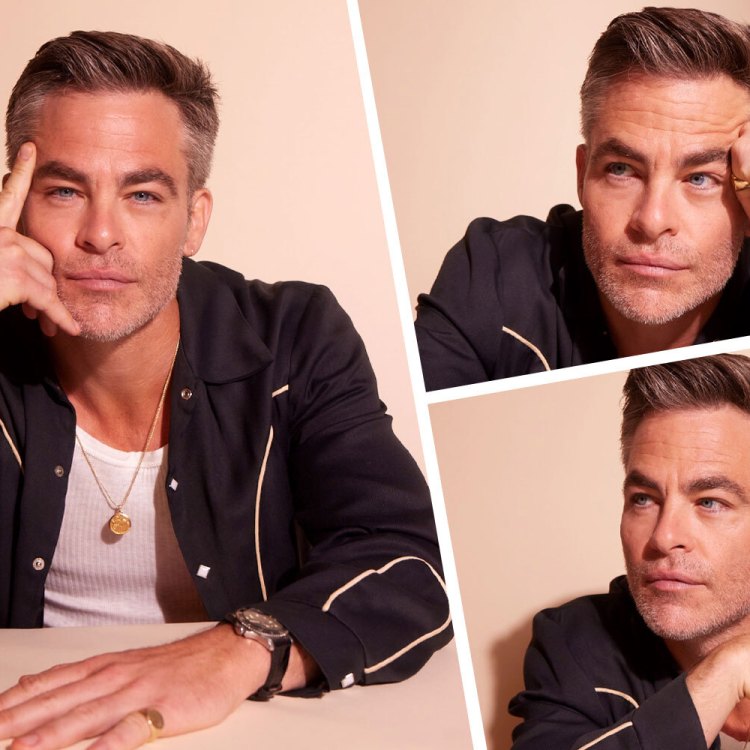Quelle drag.
Everyone loves to dress up now and then, but people who like to push it – even push-up bra it — are having a moment.
There was “Kinky Boots” star Billy Porter’s red-carpet, formal-gown voguing at the Oscars – and the announcement that his Fox show, “Pose,” will soon be starting its second season. Then Tyler Perry put on his big earrings one more time – and, he says, one last time — for “A Madea Family Funeral,” which just opened in theaters.
Meanwhile RuPaul not only has more “Drag Race” but an upcoming Netflix sitcom “A.J. and the Queen,” about “a bigger-than-life, down-on-her-luck, drag queen” and her scrappy 11-year-old sidekick. (Guess which part RuPaul plays.) Oh and “Tootsie,” a Broadway musical based on the hit film, opens in previews on March 29.
If the cha-cha heels fit, wear ’em – and thousands have, for hundreds of years, (particularly at times and in cultures when cis female performers were barred from appearing onstage). Even modern drag – with its overtly theatrical style and camp humor – goes back more than a century.
It’s a long tradition lovingly recalled in Frank DeCaro’s upcoming tribute “Drag: Combing Through the Big Wigs of Show Business.” The book celebrates dozens of regal queens, from Julian Eltinge, who once had his own Broadway theater (and still sort of does – vestiges remain in the AMC Empire moviehouse on 42nd St.) to current screams like Lady Bunny.
But are there different kinds of drag? And different rules depending on who it is who’s squeezing into that dress?
I thought about that recently during – of all things – the revelation that a lot of white male politicians loved wearing blackface back in college. Like just about everybody in America besides David Duke, I was pretty disgusted at the mockery and marginalization the practice contained, and I was following discussions of it on social media.
At which point some commenter asked, how is that different from drag?
It was the kind of hit-and-run question that you sometimes get on the internet, the sort of “what-about-ism” critique that’s tempting – and certainly faster – to ignore. But it came from a serious person and it made me pause a bit. OK, let’s think a second. Is drag just a misogynist’s version of minstrelsy? A way to reduce and ridicule women?
And the short answer I came up with is – Oh please.
But the longer, more interesting one may be – Maybe. But only if you look at certain styles of drag, and at the people they were really targeting.
To begin with, when I’m talking about drag, I’m talking about crossdressing used as part of a purely public performance — men who seek to entertain themselves and others by using women’s apparel to examine, and sometimes challenge, social norms.
For men like Glenn Milstead – Divine – it was a way to mock straight (and gay) society’s traditional standards of glamour and good taste. For John Cameron Mitchell and “Hedwig and the Angry Inch,” it became an exploration, and eventual deconstruction of borders – the wall that separated East and West Germany, the barrier that divides male and female.
And for RuPaul and his “Drag Race” contestants, it’s often aspirational, a determined reach for almost magical beauty and style – a very human hunger satisfied in feature films like “Priscilla, Queen of the Desert” and “To Wong Foo, Thanks for Everything! Julie Newmar” in which the idea isn’t to copy a real woman but create some sort of new, mythical creature.
“I do not impersonate women,” an outraged RuPaul tweeted years ago. “How many women do you know who wear seven-inch heels, four-foot wigs and skin-tight dresses?”
True, drag performances can sometimes make a fetish out of feminine prettiness – and female pain. But – unlike blackface – they start from a place of respect. It’s about paying tribute to a gender, not trashing a race.
Less high-flown are the comedians who simply want to get a laugh – and think putting on a grey wig and playing some wrinkled matron is the best way to do it. The English are particularly fond of this – you can see it in classic British holiday pantomime plays, that old chestnut “Charlie’s Aunt,” and just about any episode of “Monty Python’s Flying Circus.”
That kind of drag is based on broader, baser gags, and has little interest in really saying anything about femininity. In fact, most of the humor comes from how unconvincing the impersonation is; even in lipstick and heels, John Cleese remained the world’s funniest scarecrow.
The older-woman act, though, can get trickier when African-American performers attempt it. The early minstrel shows included, not only white men in blackface, but white men in blackface and drag; the “wench” act, with its vicious mockery of black women, was a mainstay of those ugly entertainments, and a big hit with white audiences.
Add to that classic Hollywood’s later, constant, cruel emasculation of black men – continually portraying them as cowards, or clowns – and a film like “Big Momma’s House” takes on a trickier subtext. Sure, a comedian like Martin Lawrence only wants to entertain. But what happens when those laughs come from lampooning black matriarchs? Or mocking black masculinity?
It’s not surprising that some, particularly African-American artists, see an agenda at work. Why would Hollywood go out of their way to mock powerful black men like Ving Rhames, Terry Crews, LeBron James – the list goes on – by asking them to put on pearls and a flowered frock? Are they really that intent on diminishing black male power?
“I’m a conspiracy theorist, to a degree,” Dave Chapelle once admitted to Oprah. “I connect dots… So why do they put every black man in the movies in a dress at some point in their career? Why all these brothers gotta wear dresses?… I started thinking about it, all the comics that I seen, man, strong fellas — Why they putting us in these dresses?”
So when he was asked to cross-dress for a film, Chapelle refused.
Of course, for a few black performers, like Tyler Perry, drag meant power. The success of his Madea character made him a multi-millionaire, taking him from low-budget productions on the urban theater circuit to life as a media mogul. At one point, Forbes estimated his annual earnings at $130 million.
Yet putting on those earrings also carried a price. “Alex Cross,” Perry’s ambitious attempt to reboot a popular James Patterson detective series, flopped badly. The actor’s perfectly credible supporting work in other movies – “Gone Girl,” “Vice” – has mostly gone unnoticed. In a dress, he’s a success. In trousers, he barely registers.
So, yes, drag can be slightly problematic. It can also be liberating. But it begins to border on offensive when it is used chiefly as a form of mockery. And just as there’s a British tradition of old lady drag, and a minstrel tradition of black servant drag, there’s a American, borscht-belt tradition of low-camp, limp-wristed, effeminate drag that targets gays.
You can see it most clearly in the post-war generation of comics who dominated `50s comedy; the joke isn’t that jokers like Milton Berle, with their fluttering eyelashes and pursed lips, are pretending to be women, but that they’re playing stereotypes of gay men; they’re not meant to evoke femininity, but to provoke homophobia.
In fact, often the big joke in these comedies revolves around homosexual panic: What will happen after some poor straight man gets tricked into thinking he’s fallen for a “real” woman? How far will the deception – and his humiliation — go? Will they even – horrors! – start to have sex?
For example, the comedy classic “Some Like It Hot” is crammed with jokes, but the one that’s chosen as the capper is that an aging playboy wants to marry flirty, fluttering Jack Lemmon. Confronted with the truth – “I’m a man” – the would-be groom greets it with a blithely accepting “Nobody’s perfect.” It’s a perfect ending – but a very long way from the cruelties of real life.
And of all the uses drag can be put to – from the delirious self-empowerment of “Outrageous!” to the occasionally clunky mansplaining of “Tootsie” – using it as a way for straight men to mock gay ones is the worst.
This article was featured in the InsideHook newsletter. Sign up now.






















